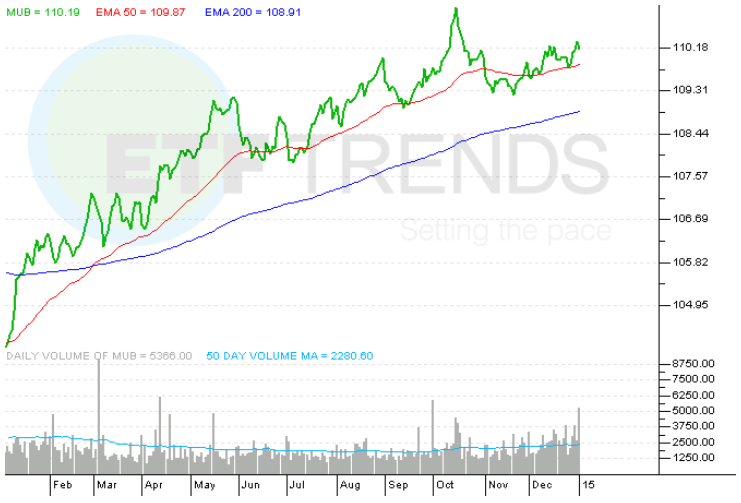Low Supply to Support Municipal Bonds Market ETFs
Post on: 14 Октябрь, 2015 No Comment

Uncategorized News:
As long as investment demand for municipal bonds hold steady, munis-related exchange traded funds could maintain their momentum, with supply of new issuance expected to decline into 2017.
According to Janney Montgomery Scott LLC.. new U.S. muni bond issuance will fall every year to $175 billion by 2017, reports Michelle Kaske for Bloomberg .
Tom Kozlik, director of municipal credit analysis at Janney, expects that the primary market issuance will be around $250 to $275 billion this year. So far this year, states and localities have sold $95.2 billion in long-term, fixed-rate debt, about 23% less than what the amount issued for the same period year-over-year.
The rate of growth for outstanding U.S. state debt in 2013 slowed for a fourth consecutive year and was the lowest growth in debt for the past 20 years, according to Moodys Investors Service.
The continued slowdown in the growth of net tax-supported debt primarily reflects a new conservative attitude toward debt among the states, Kimberly Lyons, a Moodys Assistant Vice President and Analyst, said in a research note. Growing spending pressures coupled with inconsistent revenue growth and uncertainty over future revenue trends have forced states to take a cautious approach when considering the addition of new debt service costs to their budgets.
New issuance could steadily decrease due to six factors, including higher interest rates, use of alternative debt products, austerity measures, less flexibility in spending, political and voter attitudes, and lack of public policy support for infrastructure spending.
A higher interest rate environment and our other qualitative factors will help keep new money issuance closer to pre-2000 levels, Kozlik said in the Janney report.
Consequently, investors should expect the low supply of new municipal bonds to persist.

Only a change in attitudes and a reprioritization of spending on infrastructure, and investing for the future is likely to increase issuance, Kozlik added. These are tremendous barriers to overcome without a crisis or other incentives.
Municipal bond ETFs have been strengthening this year on the lower supply in new issuance and could find further support if states keep cutting back on spending. The iShares S&P National AMT-Free Muni Bond ETF (NYSEArca: MUB ) has increased about 6.0% year-to-date. MUB has a 6.06 year duration and a 30-day SEC yield of 1.88%, or a taxable equivalent 3.32% 30-day SEC yield. [Monitor Your Muni ETF’s State, Credit Risk Exposure ]
iShares S&P National AMT-Free Muni Bond ETF
For more information on the munis market, visit our municipal bonds category .
Max Chen contributed to this article .
The opinions and forecasts expressed herein are solely those of Tom Lydon, and may not actually come to pass. Information on this site should not be used or construed as an offer to sell, a solicitation of an offer to buy, or a recommendation for any product.














